A Stroll Through History: Discovering the Artistic Wonders of Lion Grove Garden
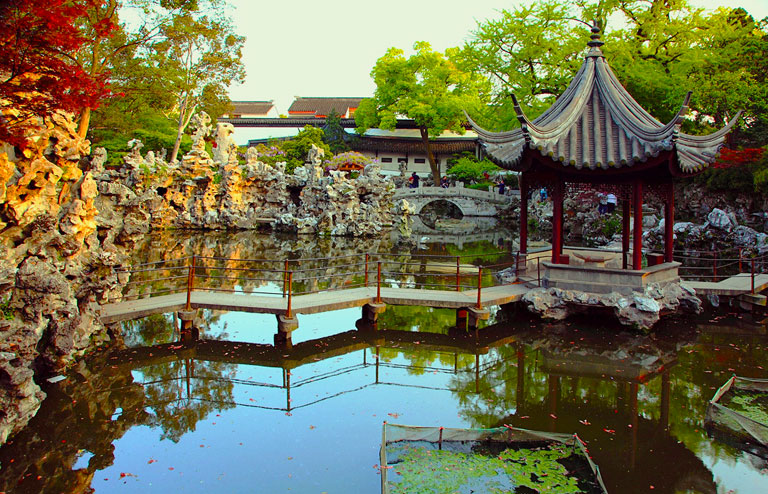
An Essential Guide to Visiting Lion Grove Garden
Nestled in the heart of Suzhou, the Lion Grove Garden (狮子林) is a breathtaking oasis that beckons travelers with its enchanting landscapes and intricate rockeries. What sets this garden apart is its mesmerizing labyrinth of stone formations, often likened to a “kingdom of rockeries,” where visitors can wander through a maze of natural artistry crafted over centuries. This UNESCO World Heritage Site, originally established in 1342, offers a unique glimpse into the artistry and philosophy of classical Chinese garden design.
In this guide, we will take you on a journey through the Lion Grove Garden, detailing its rich history, striking architecture, and the serene beauty that captivates all who visit. You’ll discover the key highlights, from the elegant Yanyu Hall to the poetic Pavilion for Greeting the Plum Blossoms, each with its own story and charm. We will also cover essential visitor information, including opening hours, ticket prices, and tips for making the most of your experience. Whether you’re a history buff, a nature lover, or simply seeking tranquility, Lion Grove Garden promises an unforgettable experience amidst its verdant splendor.
In This Guide
- An Essential Guide to Visiting Lion Grove Garden
- The Rich History and Legends of Lion Grove Garden
- Main Highlights: What You Absolutely Can’t Miss
- Planning Your Visit: A Practical Guide
- Tickets: Prices, Booking, and Tips
- How to Get There: A Complete Transportation Guide
- Local Cuisine and Accommodation Nearby
- Frequently Asked Questions
- Final Thoughts on Your Trip
The Rich History and Legends of Lion Grove Garden
The Origins of Lion Grove Garden
The enchanting Lion Grove Garden, known as Shi Zi Lin, boasts a history that dates back to 1342 AD. Originally part of the Putizhengzong Temple, it was established by the revered monk Tianru after he delivered a sermon in Suzhou. His disciples, inspired by his teachings, constructed the garden as a tribute to his wisdom and spiritual guidance. The garden’s name, which translates to “Lion Grove,” derives from the striking rock formations within, resembling lions resting among lush bamboo.
A Flourishing Reputation
In 1373, the garden captured the attention of the eminent painter and poet Ni Zan. His visit marked a turning point, elevating Lion Grove Garden from a secluded space to a celebrated destination among scholars, artists, and nature lovers. Ni Zan’s admiration and subsequent poetry about the garden contributed significantly to its reputation, weaving it into the cultural fabric of Suzhou.
Imperial Visits and Transformations
The garden’s allure did not go unnoticed by the imperial family. The Qing Emperor Qianlong visited Lion Grove Garden six times during the 18th century, captivated by its beauty and tranquility. Inspired by its design, he commissioned similar gardens in the Summer Palace in Beijing and in Chengde, which are now renowned in their own right. This imperial patronage ensured that the garden remained a vital part of Chinese heritage, cherished by both the elite and the general public.
The Architect’s Legacy
In a twist of fate, in 1917, the garden came under the care of the renowned architect I. M. Pei’s ancestor. Recognizing its historical value, he purchased Lion Grove Garden and later donated it to the state in 1945. This act ensured its preservation for future generations, allowing visitors from around the world to experience its beauty and historical significance.
Legends and Cultural Significance
Lion Grove Garden is steeped in legends that enrich its narrative. One popular tale speaks of an ancient stone resembling a lion that roamed the garden at night, watching over the peace of the meditative monks. Another legend recounts how Tianru, during his meditation, discovered the profound teachings of Buddhism in the cave that inspired the garden’s name. These stories, passed down through generations, add layers of intrigue to the garden’s serene ambiance.
A Garden of Reflection
Today, Lion Grove Garden stands not only as a historical landmark but also as a sanctuary for reflection and inspiration. Its intricate rockeries, ancient cypress trees, and antique pavilions invite visitors to immerse themselves in the tranquility that has captivated hearts for nearly seven centuries. As you wander through this UNESCO World Heritage Site, you can almost hear the whispers of the past—echoes of poets, artists, and monks who found solace within its embrace.
In essence, Lion Grove Garden is a tapestry woven from nature, history, and legend. It beckons international travelers to explore its rich heritage, reminding us of the beauty and wisdom that can be found in the harmonious blend of art, nature, and spirituality.
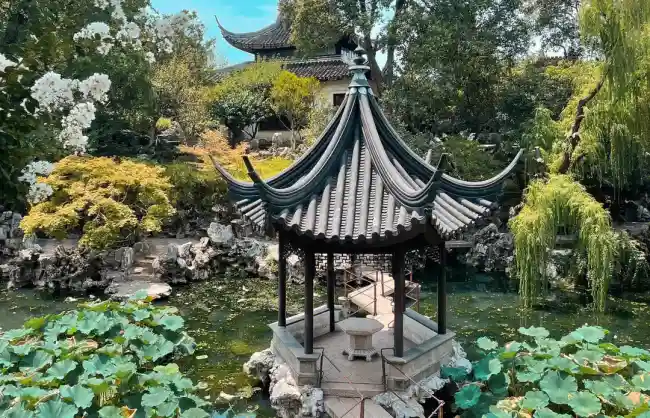
Lion Grove Garden.
Main Highlights: What You Absolutely Can’t Miss
Yanyu Hall (燕誉堂) – The Heart of Tranquility
Step into the serene embrace of Yanyu Hall, the main hall of Lion Grove Garden, where ancient architecture whispers stories of the past. This exquisitely designed space is divided into northern and southern sections, each adorned with delicate furnishings and intricate decorations. As you wander through, take a moment to appreciate the craftsmanship that reflects the elegance of various Chinese dynasties. Tip: Arrive early in the day to avoid crowds and enjoy a quieter experience in this peaceful setting.
True Delight Pavilion (真趣亭) – A Royal Connection
Nestled within the lush greenery, the True Delight Pavilion beckons visitors with its intriguing history. Built in 1762, it was a favorite of Emperor Qianlong, who famously expressed his delight during a visit. The pavilion’s name, “Zhen Qu,” meaning true delight, encapsulates the joy it brings to all who visit. Admire the calligraphy of the emperor hanging prominently within. Tip: Bring your camera; the pavilion offers stunning views of the surrounding rockeries that are perfect for photographs.
Pavilion for Greeting the Plum Blossoms (问梅阁) – A Poetic Retreat
Discover the romance of the Pavilion for Greeting the Plum Blossoms, a spot that invites contemplation and creativity. Surrounded by a delightful array of plum trees, this pavilion is a picturesque setting for enjoying the seasonal blooms. The intricate floor decorations echo the beauty of the blossoms above, adding to the enchanting atmosphere. Tip: Visit in early spring when the plum trees are in full bloom for a truly magical experience.
The Kingdom of Rockeries – Nature’s Masterpiece
Venture into the heart of Lion Grove Garden, known as the “Kingdom of Rockeries.” This unique feature boasts a labyrinth of stunning rock formations that create a sense of adventure and exploration. As you navigate through the twists and turns, notice how the natural landscape has been artfully integrated into the design of the garden. Tip: Wear comfortable shoes, as the rocky paths can be uneven, and be sure to take your time to fully enjoy this natural wonder.
Lion-shaped Rocks – Nature’s Sculptures
One of the most distinctive features of Lion Grove Garden is its collection of lion-shaped rocks. These fascinating formations, nestled under flourishing bamboo, inspired the garden’s name. Each rock tells a story, and their varied shapes spark the imagination. Tip: Challenge yourself to find the most lion-like rocks! It’s a fun way to engage with the garden, especially for families.
Ancient Cypress Trees – Timeless Guardians
Amidst the manicured landscapes, you’ll find towering ancient cypress trees that stand as guardians of history. These trees, some over 500 years old, provide a sense of continuity and connection to the past. Their gnarled branches and lush foliage create a tranquil canopy over visitors, offering perfect spots for rest and reflection. Tip: Bring a book or a sketchpad to enjoy the peaceful ambiance beneath these ancient giants.
The Rockery Maze – An Adventurous Journey
For those seeking a bit of adventure, the rockery maze within Lion Grove Garden is a must-visit. This intricate network of paths and stone formations invites exploration and discovery. As you weave through the maze, keep an eye out for hidden viewpoints that offer breathtaking vistas of the garden’s beauty. Tip: Consider visiting during quieter hours in the morning or late afternoon for a more intimate and immersive experience away from larger groups.
Lion Grove Garden is not just a place to visit, but an experience to savor. Each highlight invites you to pause, reflect, and appreciate the artistry of nature and history woven together in this enchanting space.
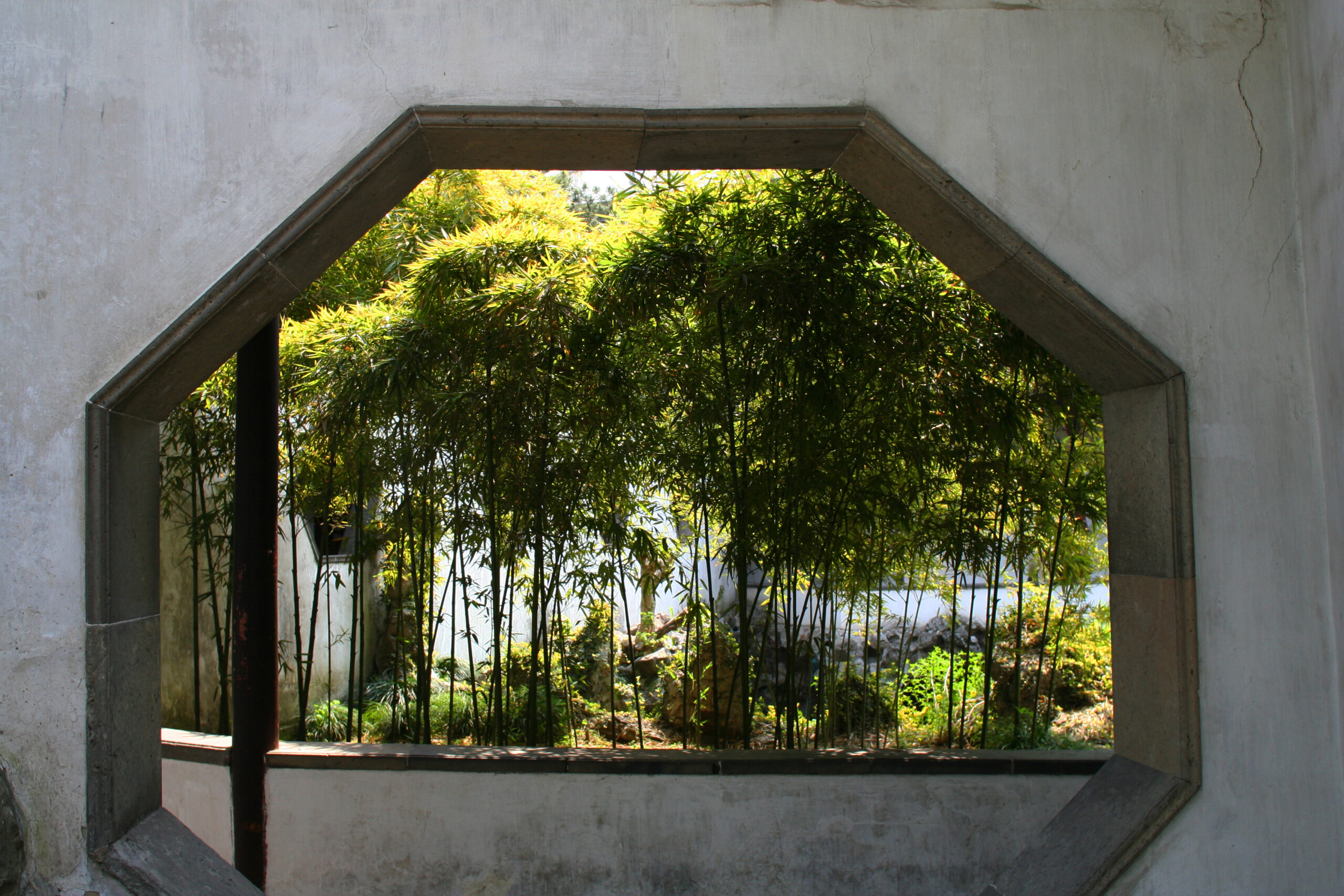
Lion Grove Garden.
Planning Your Visit: A Practical Guide
Best Time to Visit
Lion Grove Garden is a year-round attraction, but the best time to experience its beauty is during spring (March to May) and autumn (September to November). During these seasons, the weather is mild, and the garden’s flora is at its most vibrant. The plum blossoms in early spring and the changing leaves in autumn create stunning backdrops for photography. Summer can be hot and humid, while winter may see fewer visitors, offering a more tranquil experience but with less foliage.
Recommended Itinerary
Duration: 1-2 Hours
-
Arrival: Start your visit early in the morning to enjoy the garden before the crowds arrive. The garden opens at 7:30 AM.
-
Explore the Main Attractions:
- Yanyu Hall: Begin at the Hall of Peace and Happiness to appreciate its historical significance and beautiful decorations.
- True Delight Pavilion: Continue to this charming pavilion, where you can enjoy the inscriptions by Emperor Qianlong.
-
Pavilion for Greeting the Plum Blossoms: Take a moment to relax and soak in the romantic atmosphere here.
-
Stroll Through the Rockeries: Spend some time wandering through the various rockeries, known as the “Kingdom of Rockeries.” Don’t forget to capture some photos!
-
Enjoy the Flora: Take a leisurely stroll among the ancient cypresses and fragrant flowers that make this garden feel like a paradise.
-
Wrap Up: Conclude your visit by relaxing in one of the serene spots, perhaps with a book or simply enjoying the sounds of nature.
Photography Tips
- Golden Hour: The best time for photographs is during the golden hour (early morning or late afternoon) when the light is soft and warm.
- Capture the Details: Focus on the intricate details of the ancient architecture and the unique rock formations to highlight the garden’s historical essence.
- Wide Shots: Use wide-angle shots to capture the expansive views of the garden, especially when the blooming flowers are at their peak.
- Reflections: Look for ponds and water features to capture beautiful reflections of the pavilions and trees.
- Seasonal Highlights: If visiting in spring, don’t miss the plum blossoms; in autumn, the colorful foliage provides a different yet captivating backdrop.
What to Wear
- Comfortable Footwear: Since you’ll be walking on uneven paths and exploring the rockeries, wear comfortable shoes suitable for walking.
- Light Layers: Depending on the season, wear light layers that can be adjusted as temperatures change throughout the day.
- Sun Protection: If visiting during the summer, don’t forget sunscreen, a hat, and sunglasses to protect yourself from the sun.
- Camera Ready: Carry a lightweight camera bag or backpack to keep your photography equipment accessible.
Insider Tips
-
Visit on a Weekday: To avoid the crowds, try to visit during the week, especially in the morning. This will allow for a more peaceful experience and better photo opportunities.
-
Guided Tours: Consider joining a guided tour to gain deeper insights into the historical significance and architectural details of the garden, enhancing your overall experience.
-
Bring a Picnic: The serene atmosphere makes it an ideal spot for a picnic. Pack some snacks or a light lunch to enjoy amidst the beautiful surroundings.
-
Check for Events: Keep an eye on the garden’s calendar for any seasonal events or festivals that may offer unique cultural experiences during your visit.
-
Explore Beyond the Garden: After your visit, take a moment to explore the surrounding area of Suzhou, known for its rich history and beautiful waterways. Consider visiting other nearby gardens or cultural sites to round out your experience.
With these tips and insights, your visit to Lion Grove Garden is sure to be a memorable one!
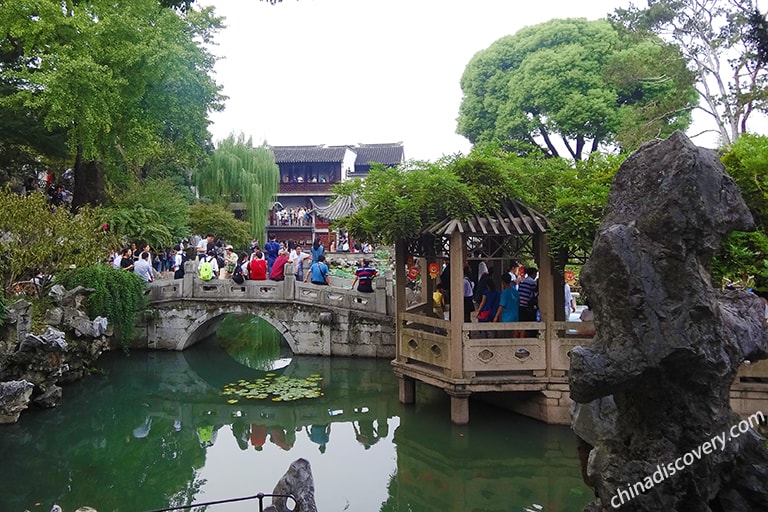
Lion Grove Garden.
Tickets: Prices, Booking, and Tips
When planning your visit to Lion Grove Garden, it’s essential to understand the ticketing options and how to secure your entry to this magnificent site. Here’s everything you need to know about ticket prices, what’s included, and how to book.
Ticket Information
| Ticket Type | Price (CNY) | Includes |
|---|---|---|
| Adult (Peak Season) | 40 | Entrance to Lion Grove Garden |
| Adult (Off-Peak) | 30 | Entrance to Lion Grove Garden |
| Children (under 6) | Free | Entrance (must be accompanied by an adult) |
| Students (w/ ID) | 20 | Entrance (valid student ID required) |
How to Book
Booking your tickets in advance is highly recommended, especially during peak tourist seasons or weekends when the garden can be quite busy. Here are some options for securing your tickets:
-
Official Website: Check the Lion Grove Garden’s official website or trusted travel agencies for online ticket purchases. This option often allows you to select your preferred date and time for entry.
-
Mobile Apps: Utilize popular travel apps that cater to international travelers in China, such as Trip.com or Klook. These platforms provide user-friendly interfaces and often have additional discounts or package deals.
-
On-Site Purchase: While you can buy tickets at the garden entrance, be prepared for potentially long lines, particularly during peak hours. This method is less reliable if you wish to avoid crowds.
-
Guided Tours: Consider booking a guided tour that includes entry to the garden. This often enhances your experience with expert insights into the history and significance of the site.
Tips for a Smooth Visit
-
Booking in Advance: To ensure you don’t miss out, especially during busy seasons, it’s best to book your tickets online at least a few days in advance.
-
Check Opening Hours: Lion Grove Garden operates from 7:30 AM to 5:30 PM during peak months (March 1st to October 31st) and slightly shorter hours in the off-peak months. Plan your visit accordingly.
-
Weather Considerations: The garden is beautiful year-round, but the experience can vary with the seasons. Check the weather forecast to dress appropriately and enjoy your visit fully.
By following these guidelines and securing your tickets ahead of time, you’ll be well-prepared to explore the enchanting landscapes and historical marvels of Lion Grove Garden. Enjoy your journey through this captivating piece of Suzhou’s heritage!
How to Get There: A Complete Transportation Guide
Reaching Lion Grove Garden: Your Transportation Guide
Lion Grove Garden, a UNESCO World Heritage Site, is one of Suzhou’s most beloved attractions. To ensure you have a seamless journey to this enchanting garden, here’s a comprehensive transportation guide tailored for international travelers.
From the Nearest Major City
Getting to Suzhou from Shanghai
- By Train
The fastest and most convenient way to travel from Shanghai to Suzhou is by high-speed train. Trains depart frequently from Shanghai Hongqiao Railway Station and Shanghai Railway Station. - Travel Time: Approximately 25-30 minutes.
- Cost: Around CNY 60-100 (about USD 9-15).
-
Tickets: You can purchase tickets online or at the train station. It’s advisable to book in advance, especially during peak seasons.
-
By Bus
Long-distance buses also run from Shanghai to Suzhou, although they are less popular due to longer travel times. - Travel Time: Approximately 1.5 to 2 hours.
- Cost: Around CNY 30-50 (about USD 5-8).
-
Departure Points: Buses leave from various locations in Shanghai, including the Shanghai South Bus Station.
-
By Car
If you prefer a more personal mode of transportation, renting a car is a viable option. - Travel Time: About 1.5 hours depending on traffic.
- Cost: Rental prices vary; expect to pay around CNY 300-500 (about USD 45-75) per day.
Arriving in Suzhou
Once you’ve reached Suzhou, you have several options to get to Lion Grove Garden.
- By Taxi or Ride-Hailing Service
Taxis are readily available at the train stations and bus terminals. - Travel Time: Approximately 10-15 minutes from the city center.
-
Cost: Around CNY 20-30 (about USD 3-5).
-
By Public Bus
Suzhou has a comprehensive bus network. You can take Bus 34, 57, or 178, which stop near Lion Grove Garden. - Travel Time: Approximately 20-30 minutes depending on traffic.
-
Cost: Around CNY 2 (about USD 0.30).
-
Walking
If you are staying nearby, Lion Grove Garden is within walking distance from many hotels and attractions in the Gusu District. Just follow the signs or use a map app on your mobile device.
Getting Around the Scenic Area
Lion Grove Garden is relatively compact, making it easy to explore on foot. Here are a few pointers to enhance your visit:
-
Walking: The best way to enjoy the garden’s intricate rockeries and pavilions is by strolling through its winding paths. Expect to spend about 1-2 hours wandering and appreciating the surroundings.
-
Guided Tours: If you want to gain deeper insights into the garden’s history and architecture, consider joining a guided tour. Many tour operators in Suzhou offer these services for a small fee.
-
Accessibility: The garden is designed to be accessible, but it’s advisable to wear comfortable shoes as the terrain can be uneven in some areas.
Tips for Your Visit
- Timing: Visit early in the morning or later in the afternoon to avoid crowds and enjoy a more serene experience.
- Entrance Fees: The entry fee is CNY 40 during peak season (March to October) and CNY 30 during off-peak (November to February).
- Opening Hours: From March 1st to October 31st, the garden is open from 7:30 AM to 5:30 PM; from November 1st to February 28th, it closes at 5:00 PM.
With this guide in hand, you’ll be well-equipped to navigate your way to Lion Grove Garden and soak in the beauty of this historical gem in Suzhou!

Lion Grove Garden.
Local Cuisine and Accommodation Nearby
Exploring the culinary delights and accommodation options near Lion Grove Garden will enrich your visit to Suzhou, enhancing your experience in this picturesque locale.
Local Cuisine
- Sweet and Sour Mandarin Fish (糖醋桂花鱼)
-
This iconic dish hails from Suzhou and features a whole fish, typically mandarin fish, expertly fried and then coated in a tangy sweet and sour sauce. The dish is often garnished with fragrant osmanthus flowers, adding a floral aroma that complements the flavors beautifully.
-
Squirrel-Shaped Mandarin Fish (松鼠桂鱼)
-
A true Suzhou specialty, this dish is prepared by meticulously deboning a mandarin fish and shaping it to resemble a squirrel. It is deep-fried to a crispy perfection and served with a sweet and sour sauce, making it both a visual and gastronomic delight.
-
Steamed Pork Buns (小笼包)
-
These delicate dumplings are a staple in Jiangnan cuisine. Filled with minced pork and a rich broth, they are steamed to perfection and served with a dipping sauce of soy sauce, vinegar, and ginger. A must-try for any visitor, they are perfect for a quick snack or a leisurely meal.
-
Wontons in Spicy Sauce (红油抄手)
- Wontons are a popular dish in Suzhou, typically filled with ground pork and vegetables. They are served in a spicy, flavorful sauce that includes chili oil, soy sauce, and vinegar, creating a satisfying combination of textures and flavors that’s sure to tantalize your taste buds.
Accommodation Options
-
Luxury: Suzhou Marriott Hotel
Located just a short drive from Lion Grove Garden, this luxurious hotel offers modern amenities, elegant rooms, and stunning views of the surrounding area. Guests can enjoy a variety of dining options, a full-service spa, and easy access to local attractions. -
Boutique: Hotel Soul Suzhou
This stylish boutique hotel is situated in a prime location near the garden and showcases a blend of traditional Suzhou architecture with modern design elements. Featuring unique rooms adorned with local art, Hotel Soul provides a cozy atmosphere and personalized service, making it an ideal choice for travelers seeking a charming stay. -
Budget: GreenTree Inn Suzhou Guanqian Street
For those on a budget, this hotel offers comfortable accommodations at an affordable price. Located within walking distance of Lion Grove Garden, GreenTree Inn features clean, simple rooms and essential amenities, providing a practical base for exploring Suzhou.
With these culinary and lodging options, your visit to Lion Grove Garden will be complemented by the rich flavors and comfortable stays that Suzhou has to offer!
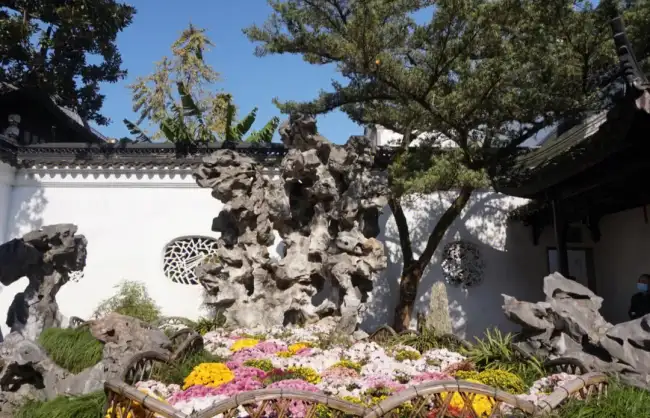
Lion Grove Garden.
Frequently Asked Questions
Frequently Asked Questions about Lion Grove Garden
1. Is Lion Grove Garden suitable for children and the elderly?
Absolutely! Lion Grove Garden is generally accessible for children and elderly visitors. The paths are well-maintained, and the tranquil environment offers plenty of opportunities for leisurely exploration. However, be mindful that some rockeries may have uneven surfaces, so appropriate footwear is recommended.
2. Are there English signs available throughout the garden?
Yes, Lion Grove Garden provides English signage alongside Chinese descriptions, making it easier for international visitors to navigate and understand the historical and cultural significance of the various features within the garden.
3. How much time should I plan to spend at Lion Grove Garden?
A visit to Lion Grove Garden typically takes about 1 to 2 hours. This allows ample time to stroll through the picturesque landscapes, admire the rockeries, and explore the ancient pavilions without feeling rushed.
4. What are the opening hours of Lion Grove Garden?
The garden opens daily from March 1st to October 31st, from 7:30 AM to 5:30 PM, and from November 1st to February 28th, from 7:30 AM to 5:00 PM. It’s advisable to arrive earlier in the day to fully appreciate the beauty of the surroundings.
5. How much is the entrance fee?
The entrance fee is CNY 40 during the peak season (March to October) and CNY 30 during the off-peak season (November to February). It’s a small price to pay for such a rich cultural experience!
6. Is there a best time of year to visit Lion Grove Garden?
Lion Grove Garden is beautiful year-round, but spring (March to May) and autumn (September to November) are particularly lovely due to mild weather and vibrant foliage. The blooming flowers in spring offer a stunning visual treat.
7. Are there facilities for refreshments within the garden?
While there are no large dining facilities inside Lion Grove Garden, there are snack vendors and small tea houses nearby. It’s a good idea to enjoy light refreshments before or after your visit at one of the nearby cafes or restaurants in Suzhou.
8. How do I get to Lion Grove Garden?
Lion Grove Garden is conveniently located in Suzhou’s Gusu District. You can reach it by public transport, such as buses or taxis, from major points in the city. Additionally, many local tours offer transportation to and from the garden, making it easy for visitors to include it in their itinerary.
Final Thoughts on Your Trip
As your journey through the enchanting Lion Grove Garden comes to a close, take a moment to reflect on the beauty and serenity that surrounds you. This historic haven, with its intricate rockeries, ancient pavilions, and tranquil pathways, offers a unique glimpse into the artistry and philosophy of traditional Chinese garden design. The harmonious blend of nature and architecture invites you to slow down, breathe deeply, and immerse yourself in the rich history that has unfolded within these walls since the 14th century.
Whether you found joy in the delicate charm of the Yanyu Hall, pondered over the poetic verses in the Pavilion for Greeting the Plum Blossoms, or simply reveled in the peaceful atmosphere, Lion Grove Garden leaves an indelible mark on your travel experience.
As you leave this “Kingdom of Rockeries,” carry with you not just memories of stunning landscapes and ancient stones, but also a sense of tranquility and connection to a culture that venerates harmony with nature. May your travels ahead continue to inspire and enrich your understanding of the world’s beauty, inviting you to discover more hidden gems like this one. Safe travels!